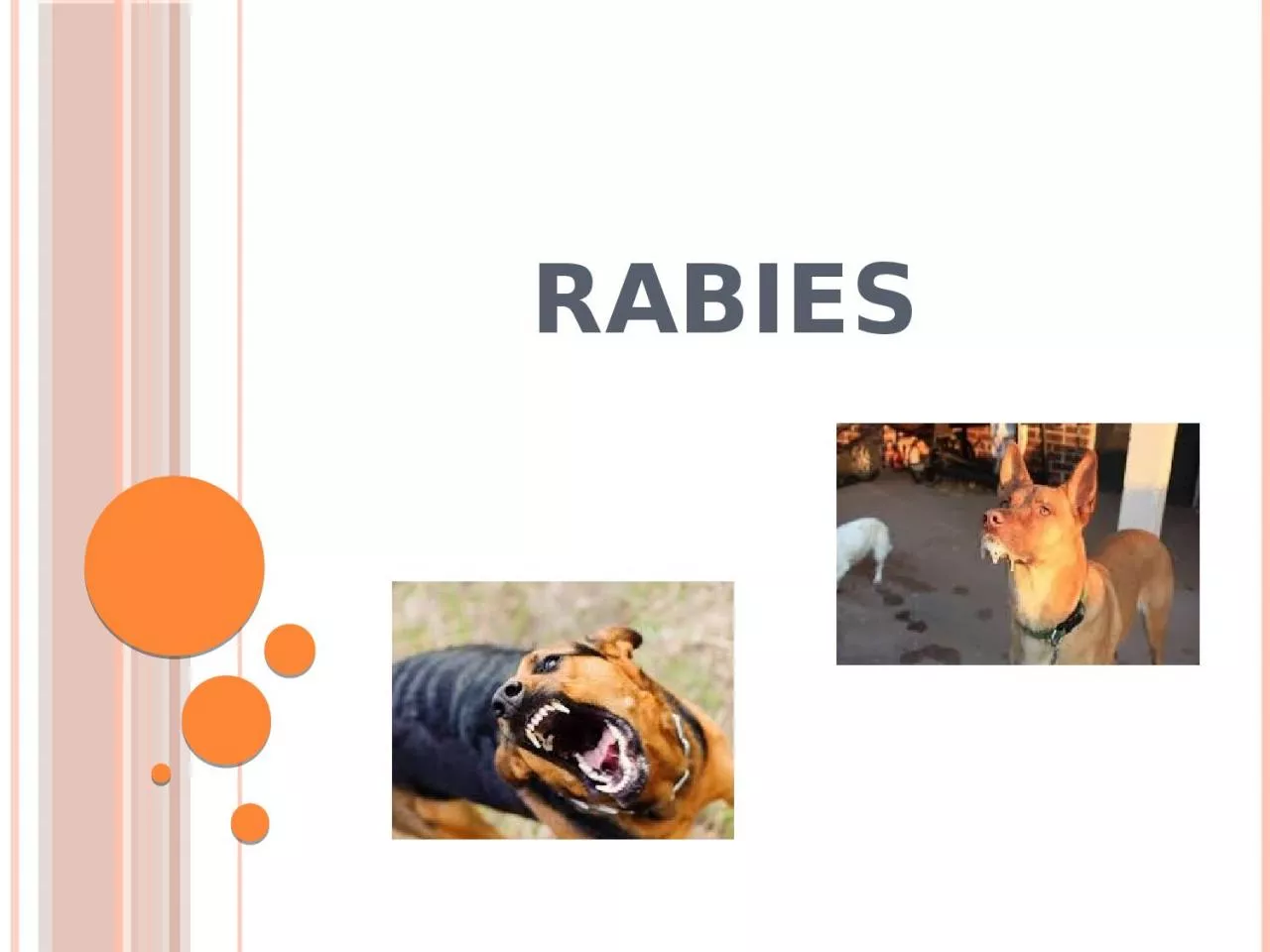

rapid progressive amp highly fatal viral disease of CNS caused by Lyssavirus type 1 Zoonotic disease of warm blooded animals dogs cats bats racoons skunks foxes Transmitted to man by bite of rabid animal ID: 1012744
Download Presentation The PPT/PDF document "RABIES Epidemiology Acute" is the property of its rightful owner. Permission is granted to download and print the materials on this web site for personal, non-commercial use only, and to display it on your personal computer provided you do not modify the materials and that you retain all copyright notices contained in the materials. By downloading content from our website, you accept the terms of this agreement.
1. RABIES
2. EpidemiologyAcute rapid progressive & highly fatal viral disease of CNS caused by Lyssavirus type 1. Zoonotic disease of warm blooded animals (dogs, cats , bats, racoons, skunks, foxes ) Transmitted to man by bite of rabid animal. Non-bite exposures : aerosols; generated in labs , caves with bats , corneal transplantation. Human to human transmission extremely rare. Worldwide endemic canine rabies : 55,000 deaths annually ( India alone 20,000 ) Louis Pasteur and Emile Roux first developed rabies vaccine in 1885.
3.
4. TreatmentNo established treatment. Isolation in quiet room ( as bright light , noise , cold draughts precipitates spasms / convulsions)Sedatives to relieve anxiety.Hydration.Intensive respiratory & cardiac support
5. PreventionHealth personnel should wear face masks, gloves, goggles, & aprons (saliva, vomits, tears, urine or other body fluids of rabies patient contain virus ) Persons having bruises , cut or open wounds not entrusted to look after patient. Pre-exposure prophylaxis. Post exposure prophylaxis.
6. Post Exposure ProphylaxisLocal wound care ( all bite wounds/scratches washed with soap and water ) reduces chances up to 80%. Devitalised tissues debrided. Tetanus prophylaxis given. Suturing delayed( if necessary done after 24-48 hours later ) Antibiotic treatment whenever indicated. Active immunisation by Rabies vaccine. Passive immunisation by Human Rabies Immuno Globulins (HRIG )